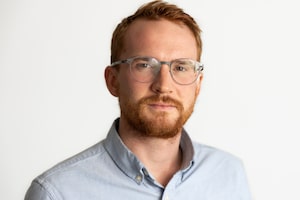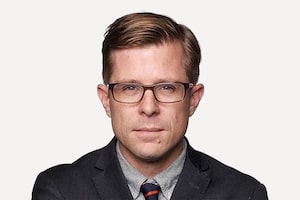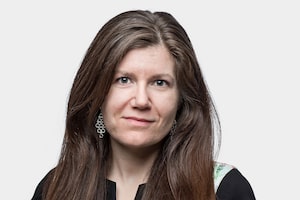In announcing the end of Quebec's curfew starting Monday, Premier Francois Legault said he hoped to lift more restrictions in the coming weeks, but urged Quebeckers to support a slow reopening.Ryan Remiorz/The Canadian Press
Canada’s two largest provinces believe they may be nearing peak hospital admissions in the Omicron-driven wave of the pandemic, bringing some hope of relief to the health care system and a chance to begin easing restrictions as early as next week.
Quebec Premier François Legault cited the hospitalization forecast in announcing on Thursday that he will lift his province’s curfew and reopen schools next Monday. Ontario officials said they plan to move more slowly to end pandemic safety measures.
The co-chair of Ontario’s COVID-19 Science Advisory Table, Peter Juni, said on Thursday that the Omicron wave of rising admissions to hospital in his province could plateau as early as Tuesday – meaning the growth in infections was already tapering off.
Cases have been hard to measure precisely as the province has restricted access to testing. But Dr. Juni pointed to a drop in test positivity numbers from 34.3 per cent on Jan. 2 to 23.2 per cent on Thursday. And he said data from cellphones show that Ontarians’ “out-of-home mobility” has dropped dramatically since December.
By early next week, Dr. Juni said, the rate of increase in new hospitalizations should start to slow or level off, with the increases in admissions to intensive care continuing for at least another week. But he cautioned it is still too early to say for certain that Ontario had seen the worst of Omicron.
“I may be too optimistic,” Dr. Juni said. “We’ll see how it goes.”
Macron and Legault play politics with the unvaccinated
Doug Ford goes back and forth on COVID response
Alberta’s top doctor, Deena Hinshaw, noted that half of any wave’s cases of COVID-19 come as the surge recedes, and caution is still warranted. Further, even if new cases have plateaued, the pressure on hospitals still increases because COVID-19 admissions lag infections.
After a frenetic week battling the pandemic, Mr. Legault told Quebeckers that the worst of this fifth wave may soon be behind them.
His announcement on Thursday will be the first step out of a deep lockdown prompted by the rapid spread of the Omicron variant that has overwhelmed the health care system.
The province is expanding its requirement for vaccination passports to big-box stores as part of its accelerating campaign to encourage holdouts to get their shots. The unvaccinated have placed a disproportionate burden on hospitals, representing just 10 per cent of Quebec adults but around half of intensive care admissions, Mr. Legault said this week.
As of Jan. 24, the vaccination requirement will apply to big-box stores of more than 1,500 square metres, such as Canadian Tire and Walmart, but it excludes grocery stores and pharmacies. It will be the first time Quebec has applied the vaccine passport to private retail, a dramatic new step the health minister previewed last week.
Mr. Legault recently introduced a plan to tax the unvaccinated and bar them from the provincial liquor and cannabis stores. He also rationed tests and replaced the director of public health.
“The good news is that the measures we put in place, that were hard, at the end of December … they produced a result,” he said on Thursday. “We’re seeing the light at the end of the tunnel.”
Students will be required to wear masks when they return to classrooms on Jan. 17. Anticipating shortages of staff as a result of rampant infection, education minister Jean-François Roberge said parents may be asked to help monitor classes, but not teach them, “as a last resort, exceptionally, temporarily.”
Quebec is the only province to impose a curfew, and this one will end after less than three weeks. It required residents to be home between 10 p.m. and 5 a.m. every night. Recent polls show the measure was less popular than the previous one, in the winter of 2021.
Restaurant dining rooms, bars, movie theatres and other public venues are still closed in the province, and virtually all indoor private gatherings are banned. Although Mr. Legault said he hoped to lift further restrictions in the coming weeks, he urged Quebeckers to support a slow reopening.
“Let’s be patient. Let’s be careful,” he said. “Because after winter comes spring.”
Meanwhile, Ontario officials provided no confirmation that restrictions could be lifted as planned in just under two weeks – although the government said this week that it will go ahead with reopening schools on Jan. 17.
Chief Medical Officer of Health Kieran Moore told reporters on Thursday it is still too early to say for sure that the province would lift the its public health restrictions on Jan. 26, the end date mentioned when Premier Doug Ford announced them on Jan. 3.
Since then, restaurants and large public venues have been shut, retailers have capacity limits, and indoor gatherings are limited to five people. The Ontario Chamber of Commerce urged the government on Thursday to let suffering businesses know whether they could expect a return to normal, and what benchmarks the province needed to hit.
Dr. Moore said the province is watching hospitalization and ICU numbers, and whether staff shortages are hindering operations, and that restrictions would need to be lifted in gradual, two-week increments. He said he expected the numbers to provide a better picture next week.
“We don’t have great clarity yet, given that the numbers of people in the health system continue to increase day after day,” Dr. Moore said. “I am looking for a plateau and a peak, and then we want to slowly and cautiously remove public health measures so we don’t have a rebound in cases coming into our hospitals.”
Ontario reported 3,649 people in hospital with COVID-19 on Thursday, a pandemic record, and an increase of more than 1,300 from a week ago. Its ICUs had 500 COVID-19 patients. Health officials say they do not expect the return of the province’s two million students to classrooms on Monday to create a large wave of new cases.
Alberta Premier Jason Kenney said his province went through the “hockey stick” phase of growth in new infections about four weeks ago.
“I am hopeful that we are in the latter half of the spike up,” he told reporters. “But … the numbers are just enormous.”
The western province counted 62,733 laboratory-confirmed active cases of COVID-19 as of Wednesday. This, Mr. Kenney noted, marked a new high for the province and, given the lack of official testing capacity in Alberta, does not capture all new infections.
Alberta’s hospitals had 786 patients with COVID-19, exceeding the high points in the first and third waves, but fewer than the peaks of the second and fourth surges.
Our Morning Update and Evening Update newsletters are written by Globe editors, giving you a concise summary of the day’s most important headlines. Sign up today.
 Eric Andrew-Gee
Eric Andrew-Gee Jeff Gray
Jeff Gray Carrie Tait
Carrie Tait